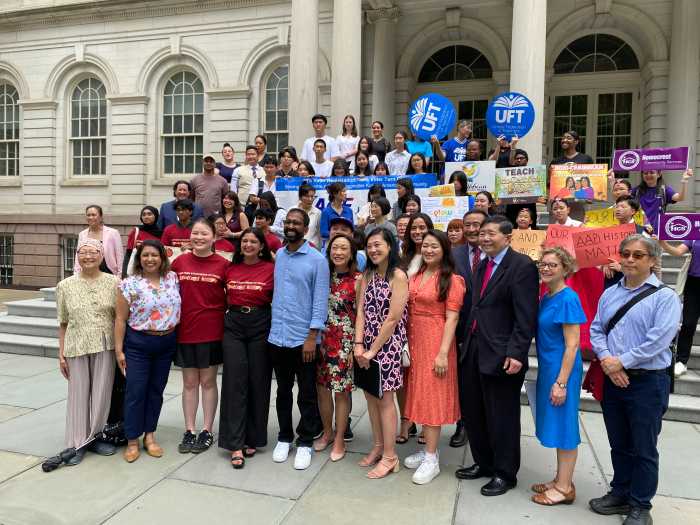By Radmilla Suleymanova
The author of “The Case for Affirmative Action in University Admissions” and the former director of undergraduate admissions at the University of California in Berkeley, quickly answered his own question with a simple “yes.”
Laird, who served on the admissions board for six years starting in 1993, argues in his book, published last month, that affirmative action is one of the methods that will move this country towards “a fully integrated, color blind society.”
Rev. Jesse Jackson, who wrote the foreword for the book, said “Laird shows that the university admissions process is an art form, not a ranking of test scores and grades.” Jackson also mentioned legacy admissions – benefits which are given to the children of wealthy alumni – with a reference to President George W. Bush's admittance into Yale University.
Laird, who started his admissions career 25 years ago doing outreach to many high schools in California, noticed what he claims is the unfairness and inequality of admissions in highly selective universities in California.
“It seems to me impossible to be educated to be a citizen or a leader in American society, unless you have been exposed to the experiences, opinions and ideas of a wide range of students from a wide range of racial, ethnic and socioeconomic backgrounds,” Laird said.
Beginning in 1980, Berkeley developed aggressive affirmative action policies which increased the enrollment of black, Latino and native American students in the undergraduate student body.
Asian American students were not included in the affirmative action program because they were very successful in gaining admission. This year Asian Americans make up 42 percent of the student body at U.C. Berkeley, compared to 29 percent of students who are white.
In 1996, Proposition 209, along with 1995's SP-1, ended the consideration of race and ethnicity in the admission process in the University of California system. Laird described it as “an enormous amount of damage” and “a tremendous crisis within the University of Berkeley.”
At Saturday's book signing, Laird discussed the implications of the measures. In the fall of 1997, the last class admitted under affirmative action was composed of 12.7 percent Chicano (students of Mexican descent), 6.8 percent black, 2.7 Latino and .8 percent native American people. In total, 23.1 percent of the incoming freshman class was made up of minorities.
By the next year, the first freshman class under Proposition 209 showed a 55.6 percent decline in the acceptance of minorities, from 1,676 students in the fall 1997 to 744 students in the spring of 1998.
Minority enrollment in the university continued to fall through 2003.
“It's ironic that most African Americans who are against affirmative action have benefited from it,” Bradley Nwosu, a junior communications major from St. John's University, said during Saturday's lecture.
A 5-4 decision from the Supreme Court in the Grutter v. Bollinger case in June 2003 once again granted institutions the legal right to consider race and ethnicity in their admission process, along with consideration for applicants who come from rural and underserved areas, applicants of great athletic or performing art ability, great interest in community service and students who acquire immense motivation to overcome hardships.
“Affirmative action gives an opportunity,” Laird said in his lecture. “It does not take midterms, finals or earn the 120 units in the degree. The notion of that is false.”
With the possible retirement of elderly Supreme Court justices who voted for affirmative action, Laird predicts Bush will assign new justices who will vote against it.
“We need to protect that decision in the upcoming battle, if the Supreme Court overturns affirmative action, it will be the most damaging thing to occur to civil rights in the last 50 years.”
Laird's book, “The Case for Affirmative Action in University Admissions” is available at most major booksellers for $26.95.
































